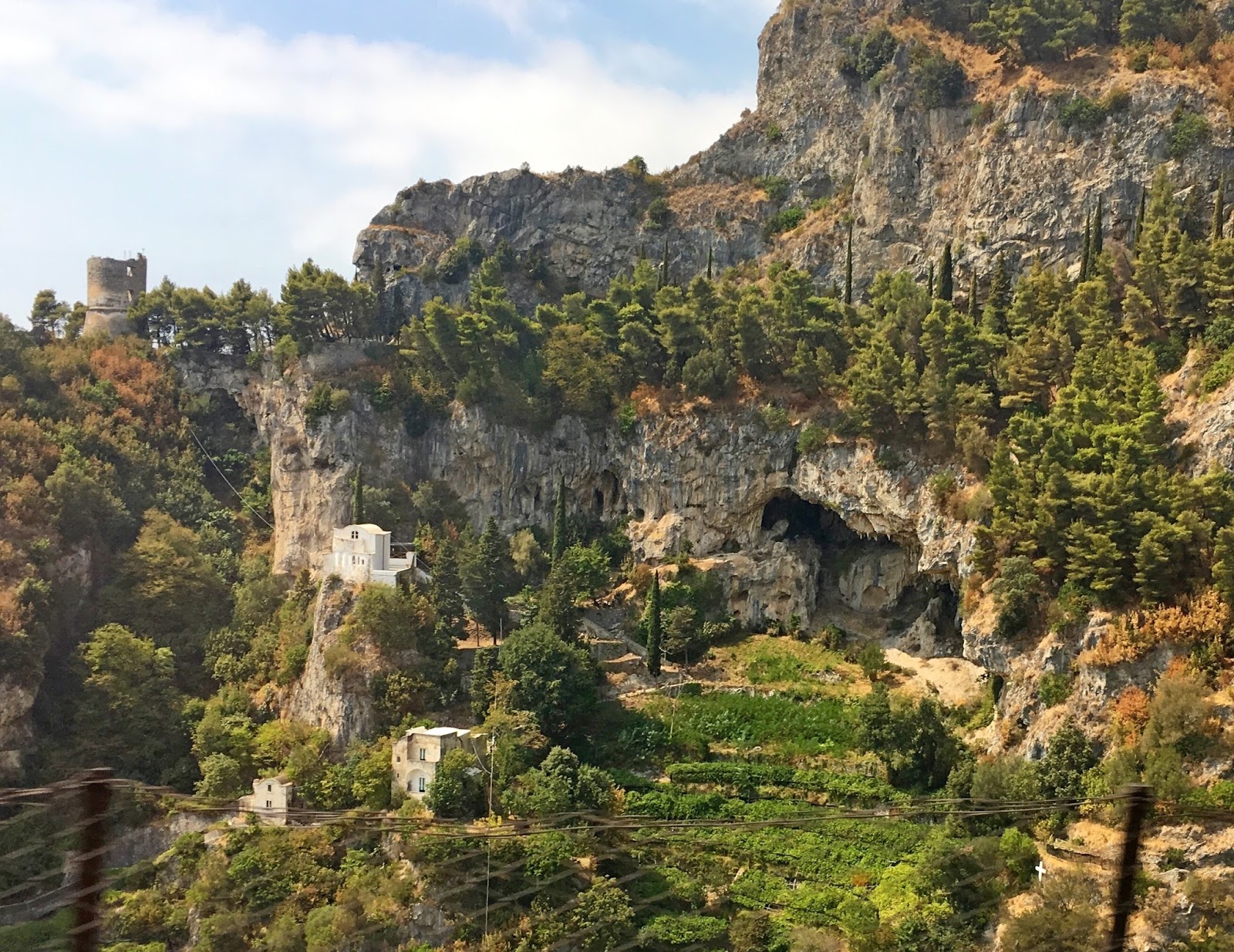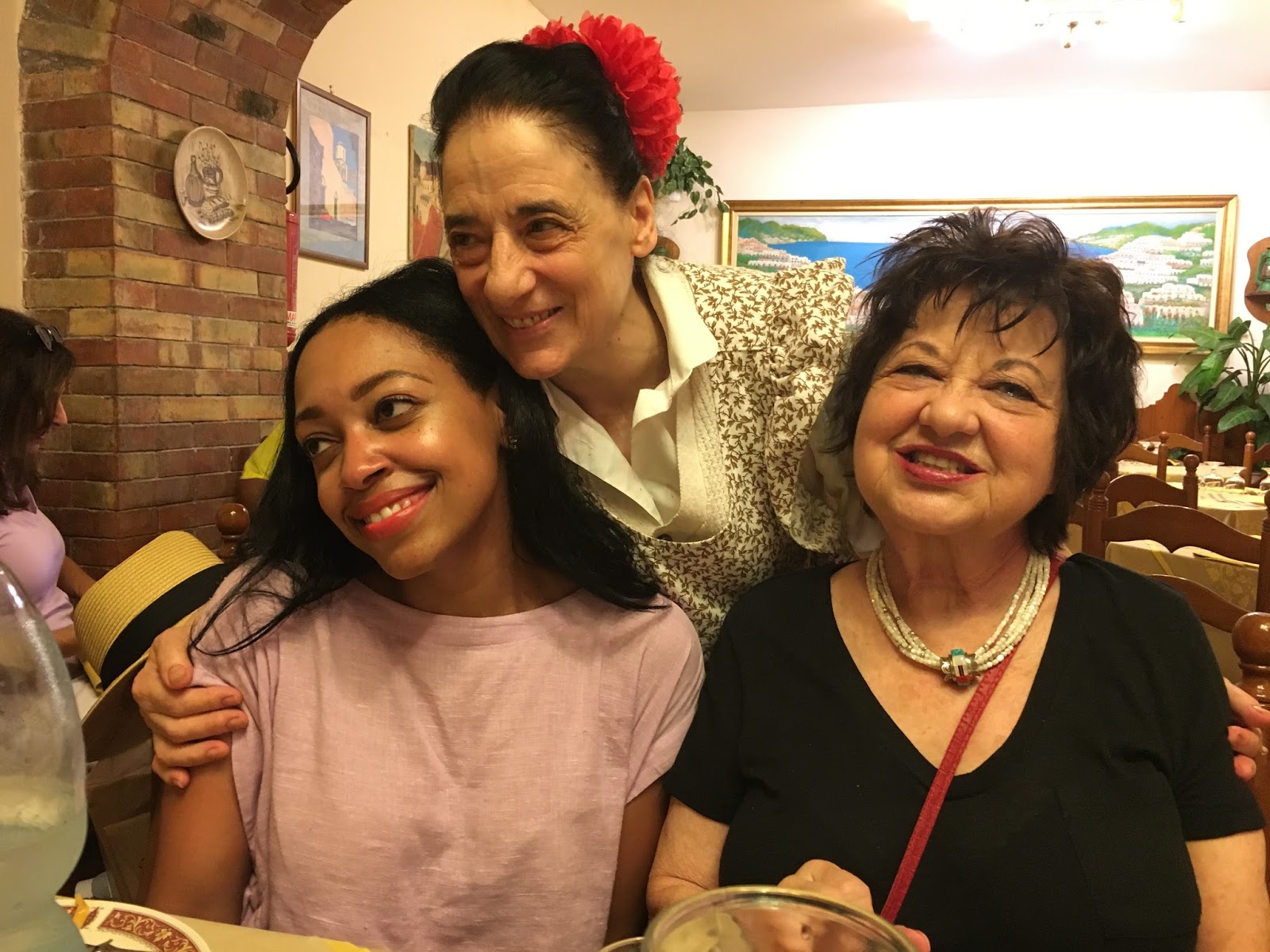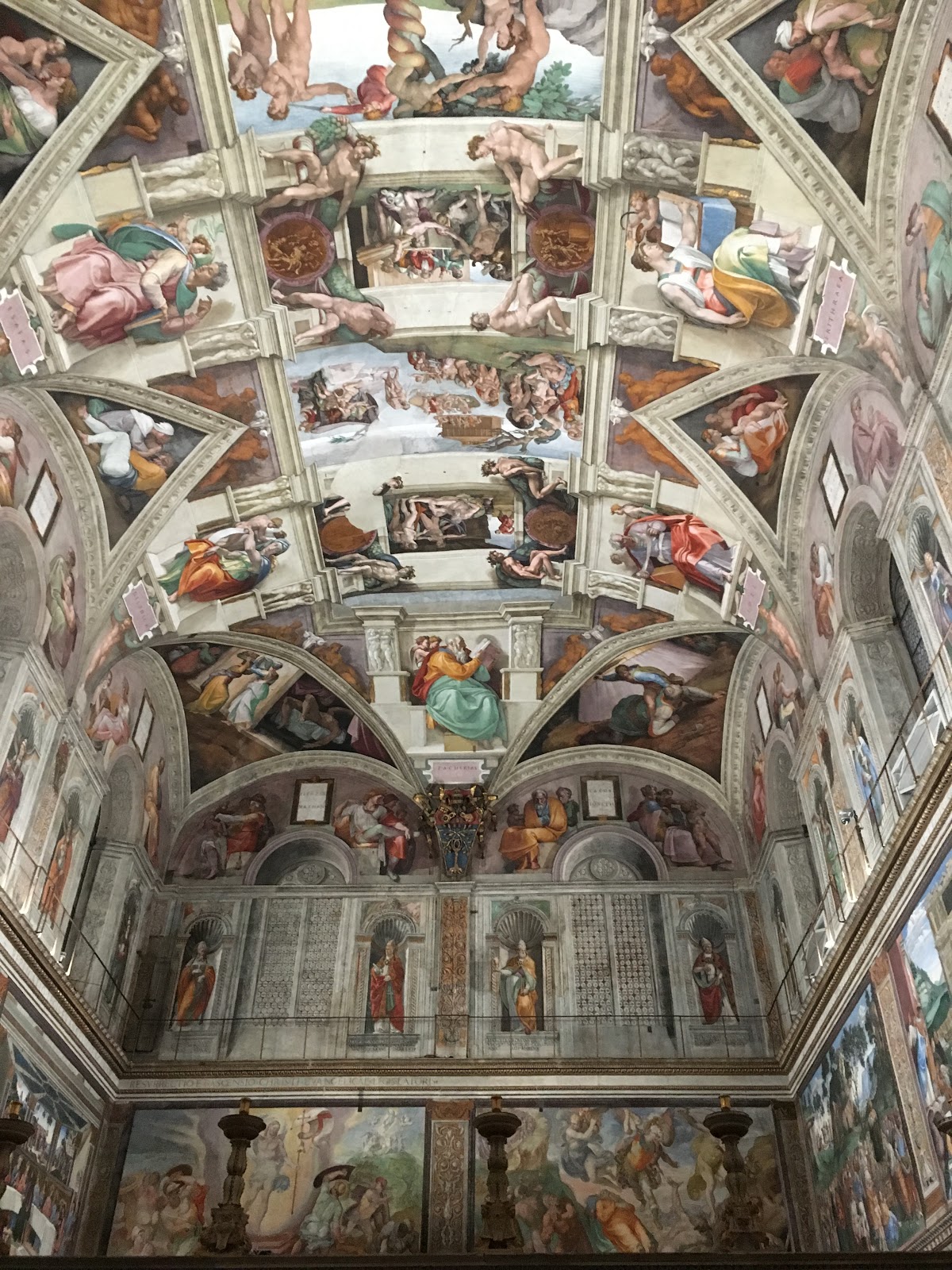--------------------------------------------------------------------------------------------------------------------------------------------------------------------------------------- AMALFI COAST, CAPRI & ROME
August 27-September 3, 2017
----------------------------------------------------------- ----------------------------------------------------------------------------------------------------------------------------
AUGUST 27 - SEPTEMBER 3
TAUCK: A WEEK IN THE AMALFI COAST, CAPRI & ROME
ITALY FLAG
Munich-Naples-Positano
Flew from Munich to Naples and was picked up by a Tauck car. Vesuvius was visible a few minutes from Naples and arrived at Le Agavi Hotel a Positano in less than an hour drive through the narrow winding roads.
http://www.tauck.com/tours/europe-tours/italy-tours/amalfi-coast-tours-wrs-2018.aspx?
 |
 |
 |
 |
 |
 |
 |
LE AGAVI
 |
 |
 |
Later I took the hotel shuttle to the center of town and browsed at an art gallery, walked all the way to the beach where I had a nice pastry and a huge frozen lemon sorbet in a hollowed out giant lemon. Refreshing on a warm day like today!
POSITANO
 |
 |
 |
 |
 |
 |
 |
 |
 |
 |
Back at the hotel we had a welcome reception with wine or prosecco at the hotel's huge rooftop terrace. Then we had our welcome dinner and met all our other co-travelers.
 |
 |
 |
August 28
Positano*Amalfi*Ravello
The view from my alfresco breakfast table.
 |
 |
 |
Boarded the Tauck bus and we drove through the steep winding, narrow road to Amalfi where we visited the Amalfi Cathedral, a 9th-century Roman Catholic church in the Piazza del Duomo. It is dedicated to the Apostle Saint Andrew whose relics are kept here. Predominantly of Arab-Norman Romanesque architectural style, it has been remodeled several times, adding Romanesque, Byzantine, Gothic, and Baroque elements. The cathedral includes the adjoining 9th-century Basilica of the Crucifix and the Crypt of St. Andrew.
AMALFI
 |
 |
 |
 |
 |
 |
 |
 |
 |
 |
 |
 |
Then we went on a boat ride along the Amalfi Coast to see the beautiful views from another perspective. Giorgio even pointed out the villas which Sophia Loren, Franco Zefirelli and Gore Vidal used to own. Rudolf Nureyev also owned an island off the coast.
 |
 |
 |
 |
 |
 |
 |
Got on the bus to go to Ravello for lunch and sightseeing. Lunch was at Tratoria Cumpa Cosimo and the owner Mamma Nedda was a welcoming funny lady, pinching my cheeks. We had various delicious pasta and other Italian dishes.
RAVELLO
 |
 |
 |
 |
 |
 |
After lunch we went to the beautiful Villa Rufolo where the annual Ravello Festival or Wagner Festival was being held. This festival is being held every year since 1953 to commemorate Wagner's 1880 visit. He famously exclaimed, “I have discovered Klingsor’s garden.” Wagner, who was 67 years old at the time of his visit, was so inspired that he stayed in Ravello long enough to write the second act of Parsifal, an opera that he had been working on for over two decades.
 |
 |
 |
 |
 |
 |
 |
Back at the Le Agavi Hotel and time for a little rest before dinner at the hotel's restaurant down by their private beach which is only accessible by funicular.
 |
 |
 |
 |
 |
 |
 |
August 29
Positano*Pompeii*Capri
After breakfast we drove to Pompeii, an ancient Roman town-city near modern Naples, in the Campania region of Italy. Pompeii, along with Herculaneum and many villas in the surrounding area, was mostly destroyed and buried under 4 to 6 m (13 to 20 ft) of volcanic ash and pumice in the eruption of Mount Vesuvius in AD 79. The city, a UNESCO World Heritage Site, had a complex water system, an amphitheatre, a gymnasium, and a port. Evidence of the destruction originally came from a surviving letter by Pliny the Younger, who saw the eruption from a distance and described the death of his uncle Pliny the Elder, an admiral of the Roman fleet, who tried to rescue citizens. The site was lost for about 1,500 years until its initial rediscovery in 1599 and broader rediscovery almost 150 year. The objects that lay beneath the city have been preserved for more than a millennium because of the long lack of air and moisture. These artifacts provide an extraordinarily detailed insight into the life of a city during the Pax Romana. During the excavation, plaster was used to fill in the voids in the ash layers that once held human bodies. This allowed archaeologists to see the exact position the person was in when he or she died. POMPEII
 |
 |
 |
 |
 |
 |
 |
 |
 |
 |
 |
 |
 |
 |
 |
 |
Left Pompeii and drove to Naples and caught a boat to Capri.
CAPRI
 |
 |
 |
 |
 |
 |
 |
We checked in at the beautiful Grand Hotel Quisisana.
GRAND HOTEL QUISISANA
 |
 |
 |
 |
 |
 |
 |
Dinner was at the hotel's poolside restaurant. After the amuse bouche I had the delicious tuna tartare and then seafood risotto accompanied by a nice Italian chardonnay.
 |
 |
 |
August 30
Capri*Anacapri
After breakfast we drove to Anacapri (above Capri) in convertible taxis and walked around the town until we reached the Villa San Michele which was the home of Axel Munthe, a prominent Swedish resident famous for being a physician, psychiatrist, and author.
ANACAPRI*VILLA SAN MICHELE
 |
 |
 |
 |
 |
 |
Next we drove to Villa Chimera for a talk by Professor Candace Ellis D'Esposito on Contemporary Italian Society.
VILLA CHIMERA
 |
 |
 |
The highlight of the day: the Blue Grotto!
BLUE GROTTO
 |
 |
 |
 |
 |
 |
 |
 |
 |
 |
Dinner tonight was at La Campannina.
 |
 |
 |
 |
August 31
Capri*Naples*Rome
After breakfast we took the funicular down to the docks and took a ferry to Naples where we boarded the high-speed train to Rome. We then proceeded to The Hotel Majestic Roma on the Via Veneto for lunch and to check in.
 |
 |
 |
 |
Our hotel in Rome on the Via Veneto.
HOTEL MAJESTIC
 |
 |
 |
I ventured out after resting for a few minutes in my beautiful room and headed towards the Trinita Dei Monti church and the Piazza di Spagna.
PIAZZA DI SPAGNA
 |
 |
 |
 |
 |
 |
 |
On to the Trevi Fountain (Fontana di Trevi), a fountain designed by Italian architect Nicola Salvi and completed by Pietro Bracci. It is the largest Baroque fountain in the city and one of the most famous fountains in the world. The fountain has appeared in several notable films, including Federico Fellini's La Dolce Vita and Three Coins in the Fountain.
FONTANA DI TREVI
 |
 |
 |
Tonight we visited the Vatican Museums and the Sistine Chapel after hours. There was only one other group there and they were a Tauck group too. It was breathtaking to see Michelangelo's paintings in person. I actually felt goosebumps as I entered the chapel.
VATICAN MUSEUMS
 |
 |
 |
 |
 |
 |
 |
 |
 |
 |
 |
The Sistine Chapel is in the Apostolic Palace, the official residence of the Pope, originally known as the Cappella Magna, it takes its name from Pope Sixtus IV, who restored it between 1477 and 1480. Today it is the site of the Papal conclave, the process by which a new pope is selected. The fame of the Sistine Chapel lies mainly in the frescoes that decorate the interior, and most particularly the Sistine Chapel ceiling and The Last Judgment by Michelangelo. During the reign of Sixtus IV, a team of Renaissance painters that included Sandro Botticelli, Pietro Perugino, Pinturicchio, Domenico Ghirlandaio and Cosimo Roselli, created a series of frescoes depicting the Life of Moses and the Life of Christ, offset by papal portraits above and trompe l’oeil drapery below.
SISTINE CHAPEL
 |
 |
 |
 |
 |
 |
 |
 |
 |
 |
 |
 |
 |
 |
 |
 |
September 1
Rome
This morning after breakfast we visited the Basilica of St Peter and it is amazing how large it is and how everything was in proportion. The magnificent Pieta by Michelangelo is on view behind glass, no thanks to a crazed person in 1972. I've been here a couple of times before and still awed by the magnificence and enormity of this Basilica. The first time I was here was in 1968 and the Pieta was still displayed without any barrier.
ST PETER'S BASILICA
 |
 |
 |
 |
 |
 |
 |
 |
 |
 |
 |
LUNCH AT RISTORANTE TRE SCALINI
 |
 |
 |
 |
The Pantheon is a former Roman temple, now a church, on the site of an earlier temple commissioned by Marcus Agrippa during the reign of Augustus (27 BC – 14 AD). The present building was completed by the emperor Hadrian and probably dedicated about 126 AD.
PANTHEON
 |
 |
 |
 |
 |
 |
 |
 |
 |
 |
 |
Back at the hotel to freshen up, then out for a light dinner and some Aperol Spritzes at the Caffe Ciampini restaurant below the Trinita Dei Monti church and overlooking the Spanish Steps. Then on the way back to the hotel stopped for some gelato and passed by the Trevi Fountain again.
 |
 |
 |
 |
September 2
Rome
First on our tour today is a visit to the Colosseum. The Colosseum, also known as the Flavian Amphitheatre, is built of travertine, tuff, and brick-faced concrete,and it is the largest amphitheatre ever built. Construction began under the emperor Vespasian in AD 72, and was completed in AD 80 under his successor and heir Titus, and later by Domitian (81–96). These three emperors are known as the Flavian dynasty. The Colosseum could hold between 50,000 and 80,000 spectators, and it was used for gladiatorial contests and public spectacle.
COLOSSEUM
 |
 |
 |
 |
 |
 |
The Roman Forum, is a rectangular forum (plaza) surrounded by the ruins of several important ancient government buildings at the center of the city of Rome. Citizens of the ancient city referred to this space, originally a marketplace, as the Forum Magnum. For centuries the Forum was the center of day-to-day life in Rome: the site of triumphal processions and elections; the venue for public speeches, criminal trials, and gladiatorial matches; and the nucleus of commercial affairs. The Forum today is a sprawling ruin of architectural fragments.
ROMAN FORUM
 |
 |
 |
Left the group and went on my own to visit a few other sights: the Piazza del Campidoglio which was designed by Michelangelo in 1471; the Vittorio Emanuele II monument; the Quirinale, the Italian president's residence.
CAMPIDOGLIO*VITTORIO EMANUELE II MONUMENT*QUIRINALE
 |
 |
 |
 |
 |
 |
 |
September 3
ROME*NEW YORK
Time to end this wonderful trip and say Arrividerci, Roma!








